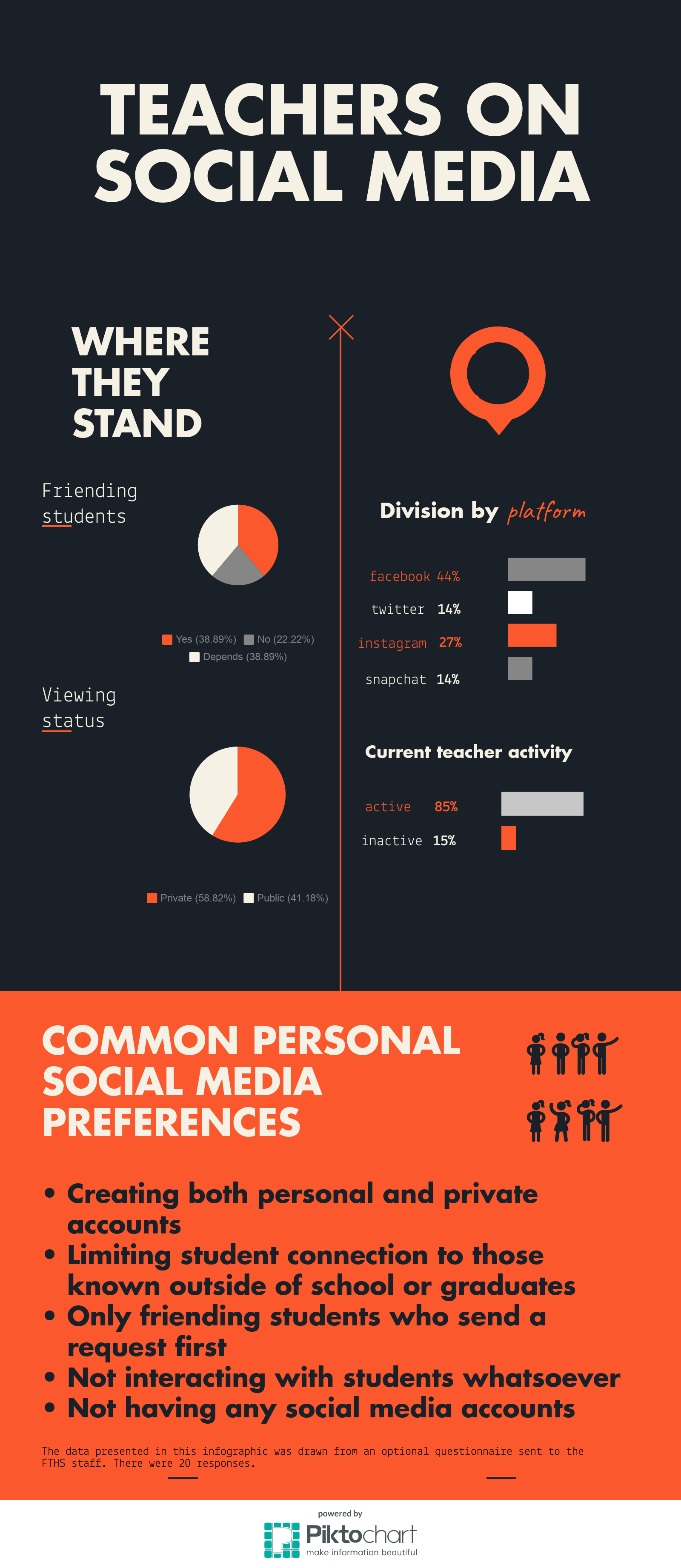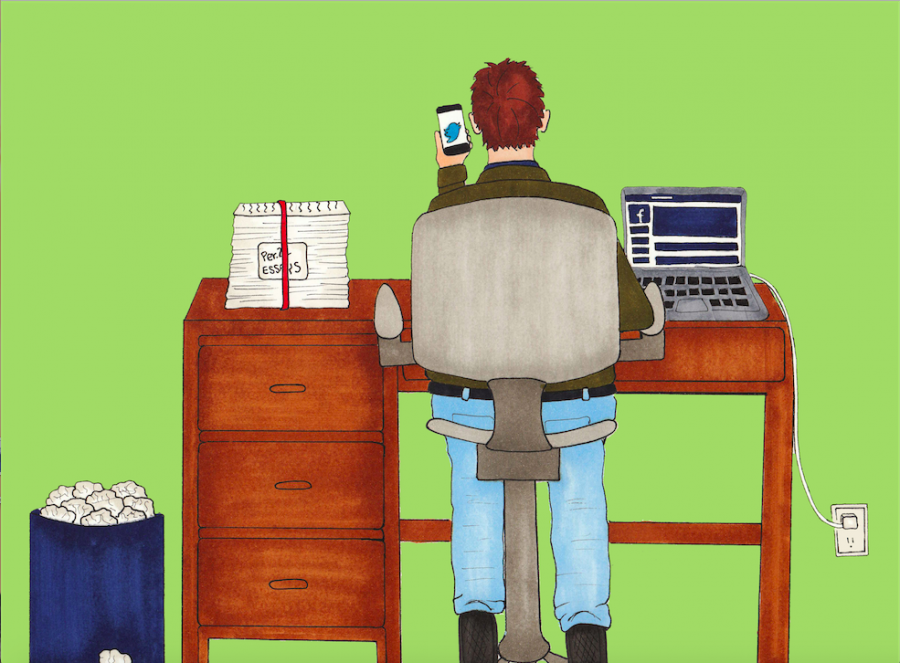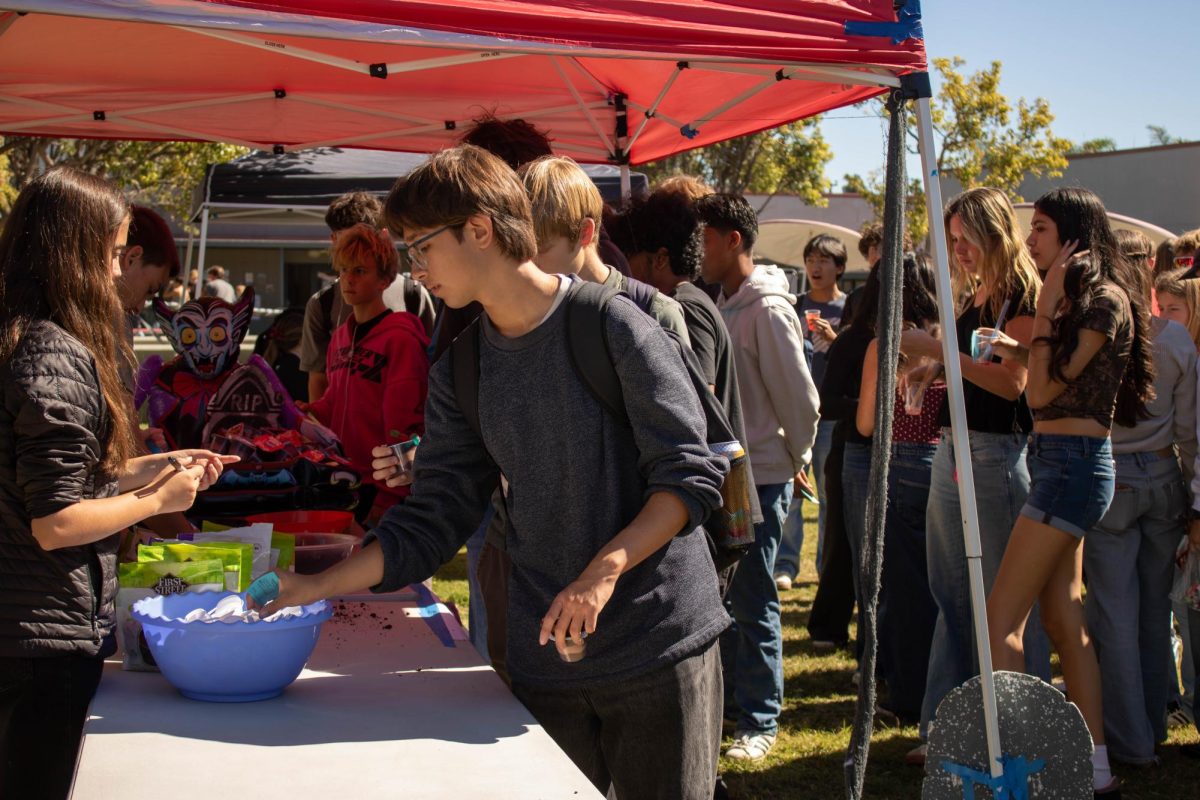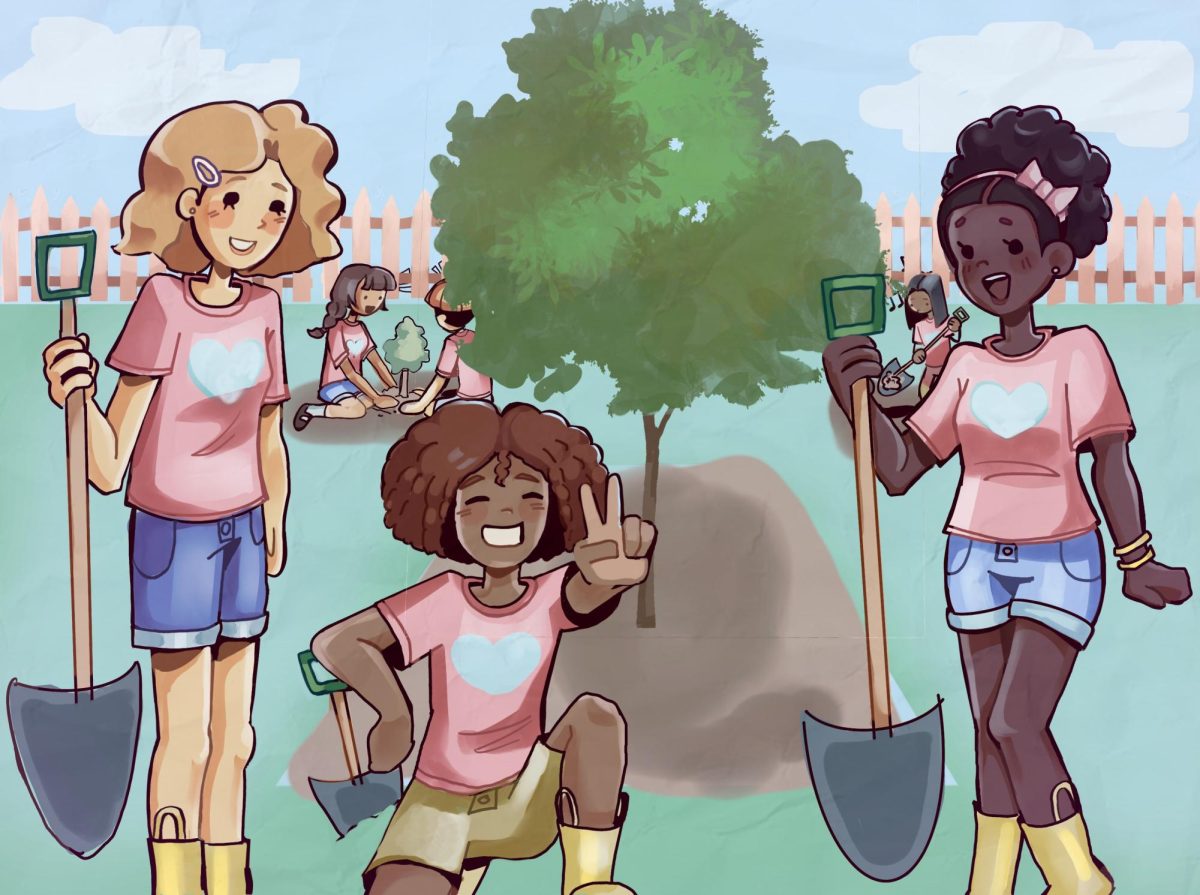Taking off in the early 2000s, social media has been around almost as long as Foothill itself. When networking sites such as Facebook and MySpace were on the rise in the mid-2000s, students now had the ability to interact with other students differently, inside and outside of the classroom. Not only were student-student relations beginning to change, teacher-teacher relations began to alter also. This eventually prompted a paradigm shift: student-teacher relations on social media.
Now in the era of Instagram and Twitter, some students find it more often than not that their teachers and admin “follow” and “friend” them. The rise of usage of social media in the past century has provoked an atmosphere where students and teachers are now able to interact at all hours of the day, which has the potential to change the classroom environment for better or for worse.
“Since this school has been around, social media has been around,” art and yearbook teacher Justin Frazier said. “It’s always been a positive thing. We’re a technology school, so why limit our interactions to [the] traditional?”
Frazier both follows and friends his students on social media. He is most active on his Instagram and Facebook accounts, which are both public. He noted upon his arrival at Foothill that some teachers had both personal and “teacher” accounts, which he never partook in on behalf of his personal beliefs. “I don’t think it’s a good idea to put anything on social media that you don’t want the whole world to see,” he said.
Although Frazier doesn’t consider himself to post all too often, he finds social media very useful to talk to his students outside of the classroom: “if I don’t have their number but I have them on social media, I would contact them that way,” he said.
Spanish teacher Josiah Guzik is most active on Facebook and Instagram, and has a “teacher” Instagram account, specifically for his students. He created this account to expose his students to posts “in Spanish in a place where they’re usually only seeing things in English.”
Guzik often sees his students outside of school for various fundraisers and Environmental Club gatherings; he considers social media to be a sort of extent of this sort of bonding with students.
“I’m not really obsessive about separating my personal life from my teaching life—in fact, I think a lot of my students know a lot about my life,” Guzik said. “But just in terms of levels of professionalism, I feel like I try and separate the two to a certain extent.”

“At Foothill […] a very important part of being a teacher here is connecting with the students,” Guzik said. “I don’t feel like I draw strict boundaries between my own personal life and my teaching life. I mean, it’s all my life.”
When following each other, teachers can sometimes be put into an “awkward situation” if they see an inappropriate post from a student, Guzik notes. He refrains from following any students for this reason, but will follow school-related accounts—student-run or otherwise.
Similarly, Vineta Sondors ‘18 believes teachers could maybe see too much of their students’ lives if they post something inappropriate. If the students “aren’t conscious of that or if a teacher does get a hold of it, they could get in a sticky situation.” However, she recognizes that this influence can go both ways.
“It makes the students be more aware of what they’re putting out there because they know their teachers will be seeing it,” Sondors said.
There are, of course, teachers who refrain from social media usage altogether. Math teacher Wayne Powers is one of them. He considers himself “notoriously bad” with technology, which has translated into a lack of a social media presence.
Noelle Hayward ‘21 is mainly active on her Instagram and Snapchat accounts. She is very aware of the presence that Foothill teachers have on these platforms, but she tends to steer clear of connecting with them.
Hayward considers it “kind of weird” for teachers and students to be connected online, but could forsee herself partaking in social media relationships with teachers as she spends more time at Foothill and forms stronger bonds with the staff and teachers.
Athletic Director Anthony Unchangco is active across numerous platforms, including Facebook, Twitter, Instagram and Snapchat.
Unchangco says social media is the easiest way for students to get in contact with him, “outside of giving my home phone number and home address to students.”
“My own personal rules are pretty much the same rules that I preach in class and school on the daily: I don’t post anything that I wouldn’t want my grandma see,” Unchangco said. When Unchangco first arrived at Foothill, the Technology Coordinator at the time informed him to practice “what you preach and online safety and good choices.”
With photos and messages that disappear after viewed by the designated party, the app Snapchat can be thought of differently in comparison to other social media. “Just because I can’t get back to it—I can’t refer back to it—doesn’t mean it’s not somewhere out there, so I don’t treat Snapchat differently than I do any other social media apps that I use,” Unchangco shared.
“For me, I’m just extending my classroom outside my four walls,” he said.
While some teachers are very open to social media interaction with students, others teachers find themselves in an intermediate “gray area,” according to history teacher Dan Fitz-Patrick.
When social media first became popularized, Fitz-Patrick recalls there being an “unfavorable” stigma around student-teacher interactions over social media.
“They used to say it was your adult world that’s sort of bleeding over with kids, and so I never wanted to go down that road,” he said.
“I also thought, personally, it could have an unfair bias,” Fitz-Patrick said. Fitz-Patrick wanted to avoid a situation where be exposed to more of certain students than others, which could lead to a bias in the classroom.
Social media extends beyond the comfortable platform of email, which “created a whole new, weird world” for Fitz-Patrick. “I see the benefits of zero social media—you’re never gonna be in any kind of gray area,” he said. “I worry about some new teachers who might be treading in some gray areas about what is too much or what’s not enough, because at the end of the day, teachers aren’t friends with students.”
“It’s not a problem until it becomes a problem,” he shared. “I think there’s more pros than there could be cons, but I think the cons could have bad consequences.”
Ventura Unified School District’s Ventura Unified Chief Technology Officer, Kurt Sowa, confirmed that the Board Policies say nothing about district control over Ventura Unified employees’ personal social media accounts.
However, if anyone feels that they are “a victim” of any inappropriate treatment by a Ventura Unified employee, Sowa advises to contact the vice principal of the school. From there, the administrator would “make a determination as to whether or not it needs to be escalated.”
Sowa said that there are minor offenses, which most likely can be “handled within the school.” Larger offenses would rise to Ventura Unified attention for investigation.
With time comes change, and there’s no telling how time will transform social media. Ever changing, technology has never been a stranger to fluctuation, which will continue throughout the years, especially with the FCC’s repeal of net neutrality. Despite this uncertainty that both teachers and students can note, most of them wield a set of internal guidelines that will ebb and flow as changes occur.










